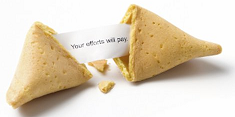Improving Demand Forecasting: Is It Worth the Effort?
 The attitude of manufacturers has changed over time for many reasons – economic conditions, global competitiveness and profit pressure. So the question is where do you get the biggest “bang for the buck?” Building a stronger brand, cost cutting or internal process changes?
The attitude of manufacturers has changed over time for many reasons – economic conditions, global competitiveness and profit pressure. So the question is where do you get the biggest “bang for the buck?” Building a stronger brand, cost cutting or internal process changes?
Of course, the answer is a blend of all these things and more, but one important issue is the ability for companies to predict the future or more practically, predict demand. In many cases forecasting is left to the sales side of the company where forecasting itself combines predicting the future as well as meeting (or exceeding by under forecasting) plan objectives. The problem sometimes comes from a lack of understanding of how to improve forecast accuracy (or that it can be improved), as well as what the effort to improve is worth.
So what’s the value proposition for improved accuracy? On the positive side of the equation there is a clear relationship between key downstream variables such as lower inventory value, reduced replenishment lead time and improved customer service levels due to improved forecast accuracy. On the effort side of the equation it usually takes some process re-engineering to create an effective collaborative environment that will support improvements not simply plan objectives. Improved accuracy also takes a reevaluation of the whole base line forecast generation process to insure the best use of technology such as sophisticated statistical modelling.
If the demand during lead time is much smaller and the product item-level forecasts are much worse in the beginning, then the impact of forecast improvements on reducing inventory would be much greater. Combine the direct reductions in safety stock with the ability to rebalance inventory, and the results can be dramatic.
Demand forecasting must become a priority for manufactures today especially if they have begun to outsource, which can potentially drive lead times up and flexibility down if item-level forecasts are not improved. In today’s world of Supply Chain analytics, users need only a rudimentary knowledge of data analysis and statistics and should be expected to primarily deal with exceptions to the forecasting process driven by predetermined business rules such as absolute forecast error or forecast bias.
The cost to improve forecast accuracy is not free; and while the secondary benefits are not ignored, unfortunately they are sometimes not associated with improved forecast accuracy. Those benefits can easily be thought of as independent of forecasting improvements indicating a different approach to achieve desired downstream results.
The other more prevalent headwind is simply the background and knowledge of how to improve demand forecast accuracy. By no means is forecasting a push button approach nor will it ever be, but the analytical heavy lifting can be done with software tools and the results can be measured to determine the trust to place in the process and when to use internal experts. In fact, measuring forecast accuracy at all levels of detail will, in and of itself, drive improvements. Surprisingly, few companies have reached this conclusion and made demand forecasting improvements an effort worth doing. Forward thinking companies in highly competitive environments must improve agility and profitability all driven by solid demand forecasting.